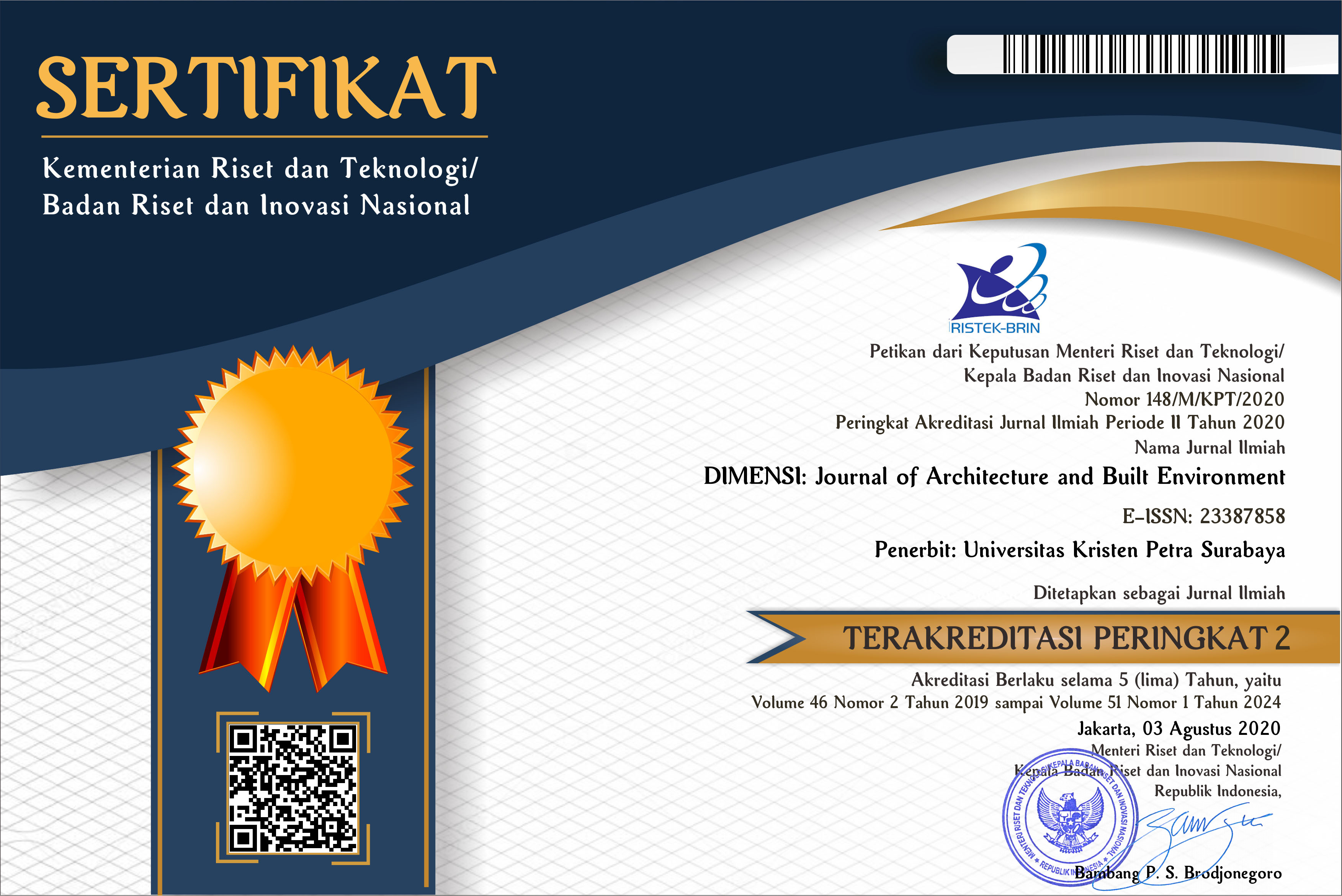ACHIEVING PAKIS’S THERMAL CONDUCTIVITY AS ARCHITECTURAL BUILDING THERMAL RESISTANT BY GUARDED STEADY-STATE HOTBOX METHOD:PART 1
 :
:
https://doi.org/10.9744/dimensi.38.2.73-78
Keywords:
Pakis, Thermal conductivity, Building thermal resistance, Steady-state Hotbox.Abstract
Thermal conductivity of various materials which are mostly listed available as building or industrial materials in reference books and websites; but one will hardly find out for every new material, and has to be observed and try out itself if we want to know the new thermal conductivity value (k). Nonetheless with new substanct likes pakis-stem blocks that come from natural tree that could be found in the tropical woodland of Indonesia. Steady-state homogeneous temperature applied with hotbox method in an uninfluent environment likes guarded laboratory environment is the right method to obtain the thermal conductivity and resistance of porousness and semi-solidness of the pakis-stem blocks. After investigating almost 24 hours with controller TRSYS01 applying with ASTM C1155, physical semi-solid pakis blocks tend to be more easy to obtain the R-value, k-value, and surface temperatures than the porous pakis. The porous pakis blocks were tend to unstable during the test due to its physical permeable condition. The resistant values (R-value) and thermal conductivity (k) values will be further published on the following discussion of pakis thermal conductivity part 2.Downloads
Download data is not yet available.
Downloads
Published
2012-09-28
How to Cite
Mintorogo, D. S., & Ahmad, M. H. (2012). ACHIEVING PAKIS’S THERMAL CONDUCTIVITY AS ARCHITECTURAL BUILDING THERMAL RESISTANT BY GUARDED STEADY-STATE HOTBOX METHOD:PART 1. DIMENSI (Journal of Architecture and Built Environment), 38(2), 73-78. https://doi.org/10.9744/dimensi.38.2.73-78
Issue
Section
Articles
License
Authors who publish with this journal agree to the following terms:
- Authors retain copyright and grant the journal right of first publication with the work simultaneously licensed under a Creative Commons Attribution License that allows others to share the work with an acknowledgement of the work's authorship and initial publication in this journal.
- Authors are able to enter into separate, additional contractual arrangements for the non-exclusive distribution of the journal's published version of the work (e.g., post it to an institutional repository or publish it in a book), with an acknowledgement of its initial publication in this journal.
- Authors are permitted and encouraged to post their work online (e.g., in institutional repositories or on their website) prior to and during the submission process, as it can lead to productive exchanges, as well as earlier and greater citation of published work (See The Effect of Open Access).


















